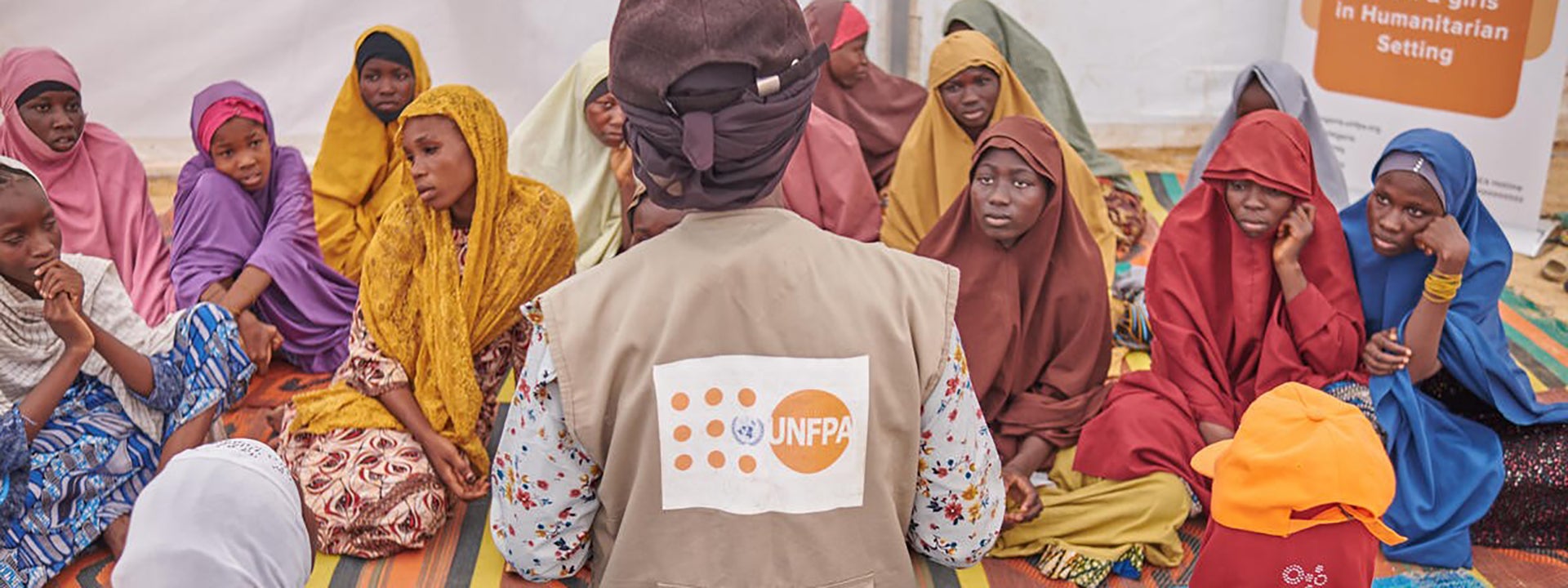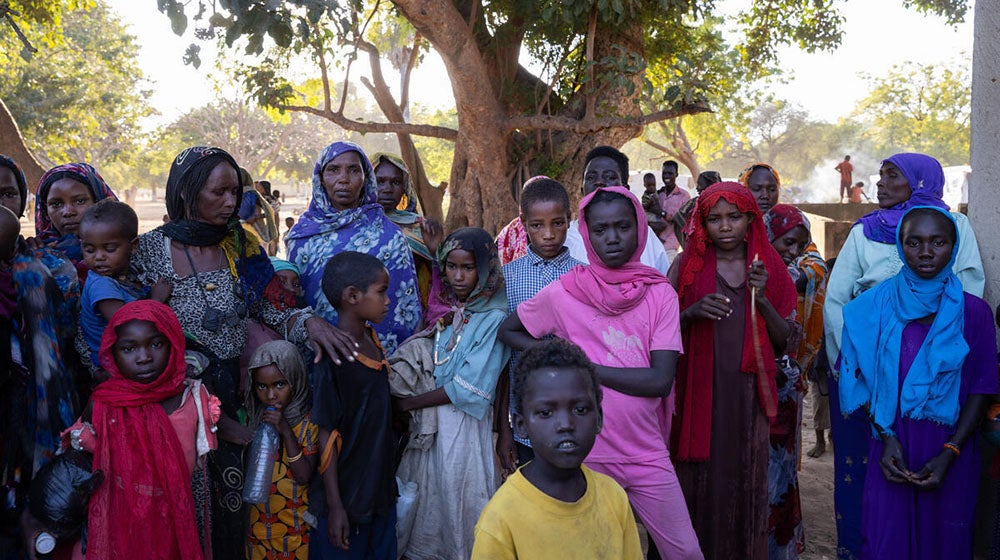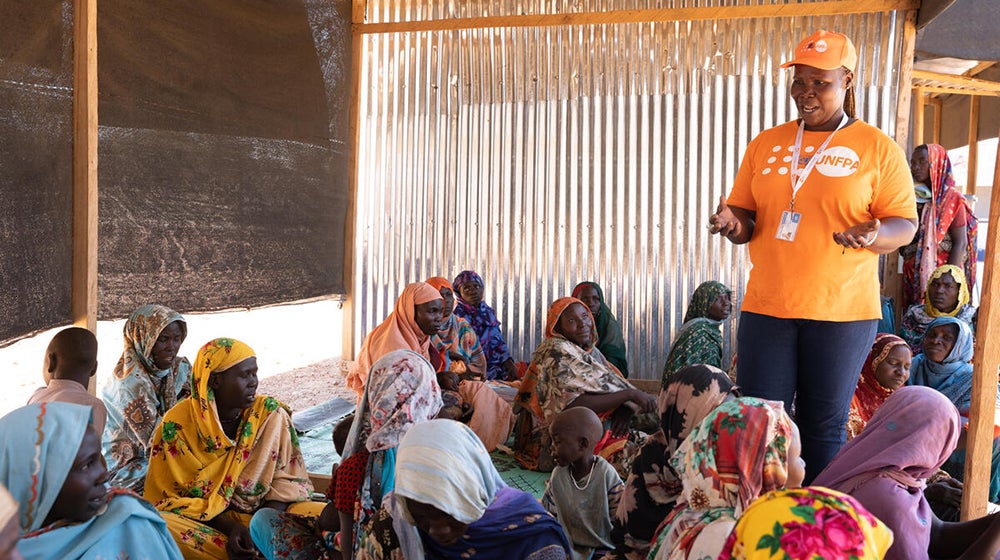Introduction
The crises in Burkina Faso, Cameroon, the Central African Republic, Chad, Mali, Niger, Nigeria and Republic of Congo are some of the most neglected and underfunded crises globally. Women and girls bear the brunt of the hardships in these humanitarian settings, facing increased risks of gender-based violence, including intimate-partner violence, sexual violence, child and forced marriages, sexual exploitation and abuse, and trafficking. Displacement, ongoing political instability coupled with increased socioeconomic vulnerability of affected populations, food insecurity, and climate change exacerbate these risks, with women and girls often facing greater challenges in accessing essential sexual and reproductive health services, while also facing heightened risks of sexual assault and kindnapping when searching for these necessities. The closure of numerous schools and health facilities in the Sahel region as a result of insecurity is compromising the future of millions of women and adolescent girls, limiting their access to sexual and reproductive health services, information and empowerment in a context dominated by harmful gender norms.
UNFPA Country Offices and partners operating in the region assist by providing timely, life-saving responses to the varied needs of different communities and establish community-based protection mechanisms to strengthen their resilience. The crisis in the Central Sahel countries is affecting the coastal countries of Benin, Cote d’Ivoire, Ghana and Togo with waves of arrivals of asylum seekers and forced displacements. Although they are not considered humanitarian countries, the situation in these countries is observed through risk analyses, and UNFPA Country Offices are receiving technical support to respond to the needs of people and communities affected.
Given the current fiscal constraints, inadequate responses to humanitarian crises in West and Central Africa will have devastating and far-reaching consequences, both for affected populations and for neighboring countries experiencing the crises' spillover effects.
Trends Impacting Women and Girls
MASS DISPLACEMENTS
In 2025, 14 million people in the WCA region are forcibly displaced (GHO, 2025). Political instability, conflicts, and widespread insecurity are predicted to fuel further displacement in West and Central Africa. This increase will be largely driven by internal population movements in the Central Sahel, and the ongoing conflict in Sudan, which has caused a massive influx of displaced people into Chad.
WOMEN AND GIRLS UNDER ATTACK
Millions of women and girls need protection from escalating violence related to increasing attacks by Non-State Armed Groups, trapped between opposing forces, armed conflict, intercommunal violence and the restriction of civic freedoms. In 2024, more than 8 million women and girls in the WCA region needed support related to gender-based violence (GBV) . Among many forms of violence, rape/sexual assault is pervasive (38% of the GBV reported cases) as well as Intimate Partner Violence (37% of the GBV reported cases). Harmful practices, such as child marriage and female genital mutilation, seriously affect adolescent girls in West and Central Africa, with detrimental consequences to their physical and mental health, both at short, mid and long term.
THE CLIMATE CRISIS
Climate change is causing more extreme weather events, such as rising temperatures and severe flooding, which has led to displacement, food insecurity, and disrupted access to essential services, including sexual and reproductive health (SRH) and GBV response and support. In 2024, torrential rains and severe flooding in Western and Central Africa left 7.3 million people requiring urgent assistance. UNFPA projections indicate that rates of Intimate Partner Violence in Sub-Saharan Africa could nearly triple by 2060 due to climate-related factors, and extreme heat also poses risks to pregnant women and newborns.
Tensions between the host communities and the IDPs are caused by the lack of access to water and firewood, and increase the risk of violence against women and girls.
FOOD INSECURITY
Conflict, violence, and climate change are intensifying the food and nutrition crisis in WCA by disrupting agricultural production, limiting access to food and causing economic instability and leading to forced displacement. This has left 40 million people in the region facing hunger. Nigeria, Cameroon, and Chad are particularly affected, accounting for over half of the total food insecure population, with displaced populations disproportionately impacted. Pregnant women experience heightened risks of malnutrition and complications like stillbirths. Worsening food insecurity is also driving an increase in child marriages, endangering girls' well-being and futures.
UNDERFUNDED AND NEGLECTED OPERATIONS
Despite UNFPA’s efforts, humanitarian operations are severely underfunded, which limits the availability and access to life-saving SRH services and GBV support and response. Underfunding in all 8 countries has left millions of women and girls without access to sexual and reproductive healthcare and protection services in 2024.
Regional Priorities and Actions
UNFPA WCA's humanitarian efforts, guided by the 2023-2025 Humanitarian Roadmap, focus on five key action areas to effectively address the region's complex crises:
- Strengthening COs' HR capacities: Equipping UNFPA staff and partners with the necessary skills and knowledge for humanitarian preparedness and response. Enabling GBViE and SRHiE communities of practice at regional level.
- Regional surge deployment mechanisms: Ensuring the availability of qualified personnel for rapid deployment in emergencies through internal and external surge rosters. UNFPA supports countries to establish a roster, or a pool, of qualified humanitarian midwives and GBV Officers who may be deployed to deliver critical life-saving services in humanitarian emergencies. Humanitarian Midwifery Rosters were activated in 13 countries with over 1,158 midwives as of December 2024. Additionally, GBV Officer Rosters have been established in 13 countries with 546 members. Please see more on UNFPA WCA’s work with Humanitarian Midwives here
- Strengthening Supply Chain Resilience for Reproductive Health in Humanitarian Contexts: Building a resilient supply chain to ensure the timely delivery of life-saving reproductive health commodities.
- Ensuring strong humanitarian coordination mechanisms: Enhancing coordination and oversight of humanitarian efforts through strengthened GBV and SRH in emergencies mechanisms at regional and country levels.
- Knowledge Management: Effectively managing and sharing knowledge and data to improve humanitarian response and advocacy.
These interconnected action areas enable UNFPA WCA region to provide comprehensive and effective support to crisis-affected populations.
Humanitarian Appeal
2025 COUNTRY FUNDING REQUIREMENTS
- Chad ($27.8 million)
- Central African Republic ($16.6 million)
- Mali ($16.5 million)
- Nigeria ($15.1 million)
- Niger ($9.2 million)
- Cameroon ($9.0 million)
- Burkina Faso ($7.2 million)
- Congo Brazzaville ($2.5 million)
TOTAL FUNDING REQUIRED IN 2025 TO REACH 8.9 MILLION PEOPLE IN 8 COUNTRIES: $103 million
Humanitarian Results
2024 Regional Snapshot
- 1,452,832 million people reached with SRH services in 8 countries
- 519,525 thousand people reached with GBV prevention, risk mitigation and response services in 8 countries
- 7 out of 8 humanitarian countries established humanitarian midwifery rosters, with 1,150 registered and/ or deployed midwives as of December 2024.
- 8 out of 8 humanitarian countries established GBV specialist rosters, with 550 registered and/ or deployed GBV specialists as of December 2024.
- 555 health facilities supported in 8 countries, including with equipment, supplies, medical personnel and operational costs
- 243 safe spaces for women and girls were supported by UNFPA in 8 countries




